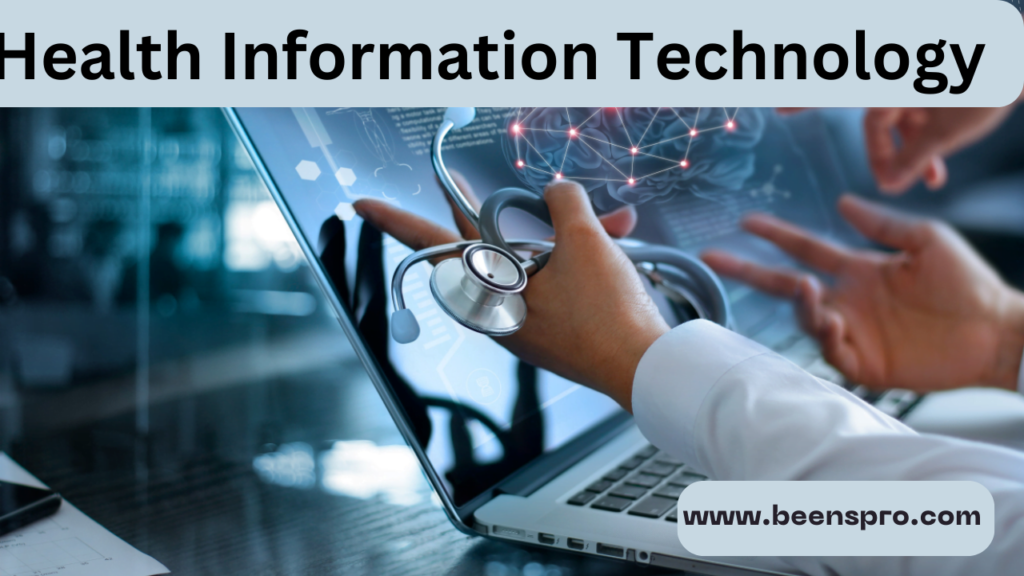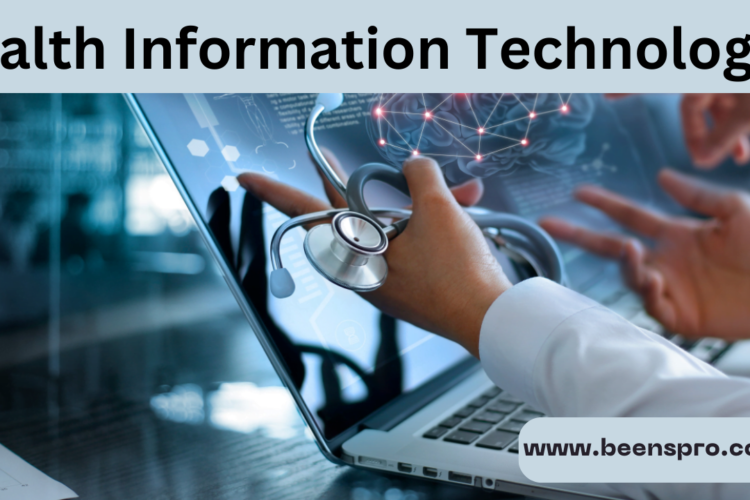
What is Health Information Technology (HIT)?
Health Information Technology (HIT) refers to the use of digital systems, software, and infrastructure to collect, manage, and analyze health data to improve patient care, enhance operational efficiency, and ensure compliance with regulatory standards. It encompasses digital health solutions, health informatics, and health data management, allowing healthcare providers to streamline workflows and deliver more accurate diagnoses and treatments.
As healthcare rapidly evolves, HIT has become a crucial part of modern medical systems, integrating electronic health records (EHRs), telemedicine, and healthcare cybersecurity to provide seamless and secure data exchange.
The Key Components of Health Information Technology
Electronic Health Records (EHR) and Their Importance
Electronic Health Records (EHRs) are digital versions of a patient’s medical history, which include medical diagnoses, treatment plans, medications, lab results, and other relevant health data. Cloud-based EHR systems allow healthcare providers to securely access patient records from anywhere, ensuring better care coordination and reducing errors.
Benefits of EHR Systems
- Improved patient care: EHRs facilitate easy access to digital patient records, reducing duplication and errors.
- Enhanced security: Advanced healthcare cybersecurity measures ensure HIPAA compliance and protect patient data.
- Increased efficiency: Medical record software improves workflows and reduces administrative burdens.
With interoperability in healthcare, EHR systems ensure smooth communication between hospitals, clinics, and insurance providers, improving the overall healthcare experience.
Telemedicine and Remote Patient Monitoring
Telemedicine has revolutionized the healthcare industry by enabling virtual healthcare consultations, reducing patient wait times, and increasing accessibility to medical professionals. Remote patient monitoring (RPM) plays a crucial role in chronic disease management, allowing healthcare providers to track patient vitals and receive real-time health updates.
Key Benefits of Telemedicine & RPM
- Enhanced accessibility: Telemedicine bridges the gap for patients in remote areas.
- Reduced hospital visits: Best electronic health record software for small clinics integrates telehealth for seamless patient consultations.
- Improved chronic disease management: Patients with conditions like diabetes and heart disease benefit from real-time monitoring.
Healthcare Cybersecurity and Data Privacy
With the rise of digital patient records, safeguarding patient data has become a top priority. Healthcare cybersecurity measures, including blockchain technology, AI-driven security solutions, and multi-layered encryption, help protect sensitive information from cyber threats.
Strategies to Enhance Data Privacy in Healthcare
- HIPAA compliance: Ensures that healthcare organizations follow strict security guidelines.
- AI-driven security solutions: Detect and prevent data breaches in real time.
- Blockchain in healthcare IT: Provides a decentralized and tamper-proof ledger for medical records.
How Does Health Information Technology Improve Patient Care?
One of the main objectives of health information technology is to improve patient outcomes by providing clinical decision support systems, AI in medical imaging, and healthcare automation. These technologies allow healthcare professionals to diagnose diseases more accurately, reduce human errors, and personalize treatment plans.
Impact of AI and Healthcare Automation
- AI in medical imaging enhances the accuracy of diagnoses by detecting diseases at an early stage.
- Clinical decision support systems provide real-time recommendations based on patient data.
- Healthcare automation reduces manual tasks, improving efficiency and minimizing errors.
Best Healthcare IT Solutions for Efficient Management
Patient Management Systems and Their Role
Patient management systems streamline administrative tasks, allowing healthcare facilities to focus on delivering quality care. Hospital management software integrates various functionalities, including appointment scheduling, billing, and patient data management.
Key Features of Effective Healthcare IT Solutions
- Seamless data interoperability standards for smooth data exchange.
- Health data analytics for better decision-making.
- Integration with EHR systems to ensure continuity of care.
Healthcare Interoperability and Data Exchange
Interoperability in healthcare IT ensures that different healthcare systems can communicate and share data efficiently. Health data management solutions enable seamless data exchange between various platforms, improving patient outcomes.
Challenges and Solutions in Healthcare Interoperability
- Data silos: Implementing cloud-based EHR systems can break down data silos.
- Standardization issues: Data interoperability standards ensure compatibility between different systems.
- Security concerns: Implementing AI-driven security solutions ensures safe data exchange.
Emerging Trends in Health Information Technology
The future of health information technology is driven by innovations such as AI in health information management, personalized medicine with AI, and wearable health technology. These advancements promise to enhance patient care and optimize healthcare operations.
Key Future Trends
- AI-driven diagnostics for early disease detection.
- Personalized medicine with AI, tailoring treatments to individual patients.
- Blockchain technology to secure and streamline medical data transactions.
FAQs
What are the benefits of using electronic health records (EHR)?
EHR systems enhance patient data management, improve efficiency, and ensure HIPAA compliance, making medical records easily accessible and secure.
How secure are digital medical records?
Healthcare cybersecurity measures like blockchain technology and AI-driven security solutions help protect patient data from breaches.
Why is interoperability important in healthcare IT?
Interoperability in healthcare ensures that different systems can exchange and use patient data seamlessly, improving coordination and care delivery.
What is the future of health IT in hospitals?
The future includes AI-driven diagnostics, healthcare automation, wearable health technology, and improved health data analytics for personalized treatment.
How does AI help in health information management?
AI supports clinical decision support systems, enhances medical imaging, and improves health data analysis for better diagnostics and patient outcomes.
